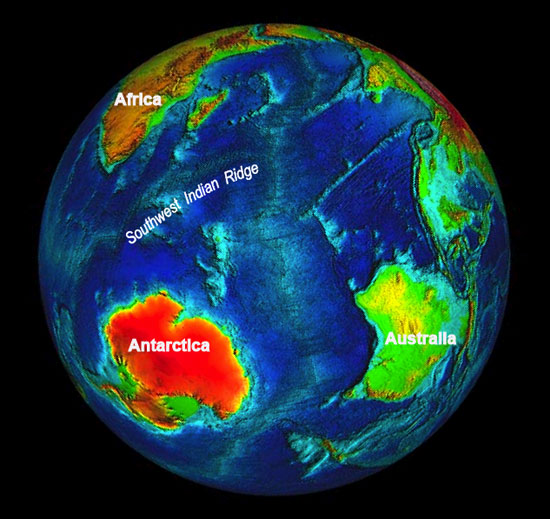Mining the deep: China seeks sulphide minerals in international seas

 Last month, the International Seabed Authorityadopted regulations for mining international sea bottoms for polymetallic sulphides. China stepped up to the plate, applying to explore a section of the Southwest Indian Ridge (SWIR)—where the African and Antarctic tectonic plates converge—for minerals, many of which are valuable to the electronic industry.
Last month, the International Seabed Authorityadopted regulations for mining international sea bottoms for polymetallic sulphides. China stepped up to the plate, applying to explore a section of the Southwest Indian Ridge (SWIR)—where the African and Antarctic tectonic plates converge—for minerals, many of which are valuable to the electronic industry.
The seabed of interest features dormant hydrothermal vents. Like deep-sea chimneys, the former 'black smokers" (shown right in the Atlantic Ocean) once spewed dark clouds of sulphides. As the sea dust eventually settled, it left rich deposits of copper, cobalt, lead, zinc, and nickel, more than 5,000 feet below the Indian Ocean surface. Gold and silver may be there, too.
Let's go get'em!
Wait, there are concerns. Scientific, mechanical, environmental and economic ones.
 Relatively little is known about the happenings at deep seabeds, or what might occur geologically and ecologically if they are disrupted. As developing technology allows us to examine these places closer, we may want to learn a lot more before we leap.
Relatively little is known about the happenings at deep seabeds, or what might occur geologically and ecologically if they are disrupted. As developing technology allows us to examine these places closer, we may want to learn a lot more before we leap.
In Nature, Jane Qiu discusses China's recent upsurge in oceanographic and deep-sea tech research and whether commercial and scientific interests could exist in harmony at the bottom of the sea.
Although they welcome the increased investment, Wang [Wang Pinxian, a marine geologist at Tongji University] and others worry that research could be hampered by a focus on finding new sources of oil and minerals. Scientists onboard research vessels such as Dayang Yihao are there primarily to fulfill that purpose. Ship time and funding for curiosity-driven research still seem hard to come by.
In past decades, millions of dollars of seabed research focused on mining manganese nodules, with relatively small economic returns.
The ISA will consider China's SWIR application next spring when they update their Mining Code on cobalt-rich crusts. Before then considerable debate over potential environmental ramifications of deep-sea mining is likely.
The Independentquotes Richard Harrison of the Marine Conservation Society:
MCS is currently campaigning for marine protected areas to ensure protection of the sea bed around UK waters, where the damage to the marine environment from activities such as dredging and trawling are all too obvious.
Deep sea mining would take this sort of damage to a new level in the wider oceans. Conditions at this depth are normally very stable, and any mining damage would impact the environment for a very long time.
Off Papua New Guinea, Canadian company Nautilus Minerals is already mining the seafloor for copper and gold in a deepwater project called Solwara I.
Images: NOAA, NOAA, Nautilus Minerals
Via: The Independent
This post was originally published on Smartplanet.com
